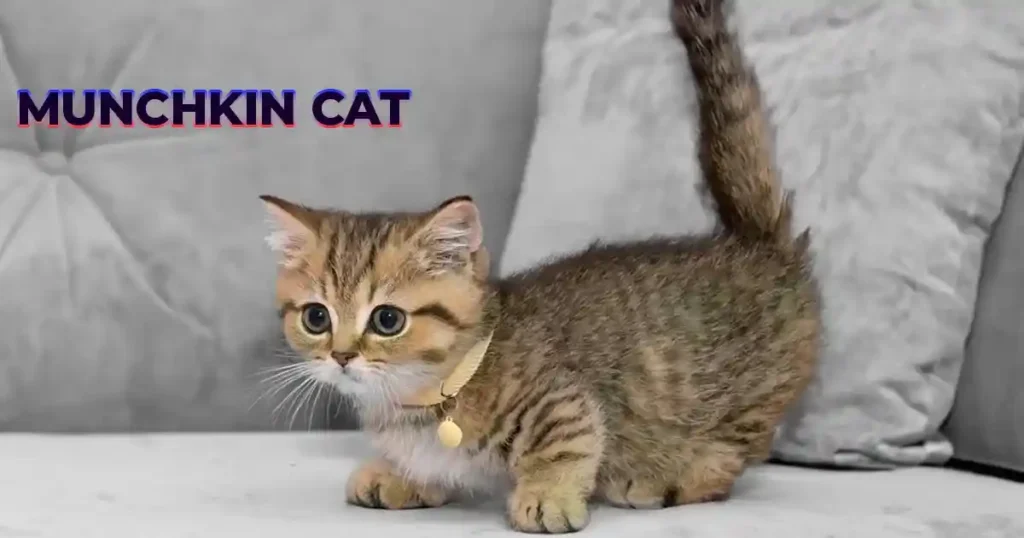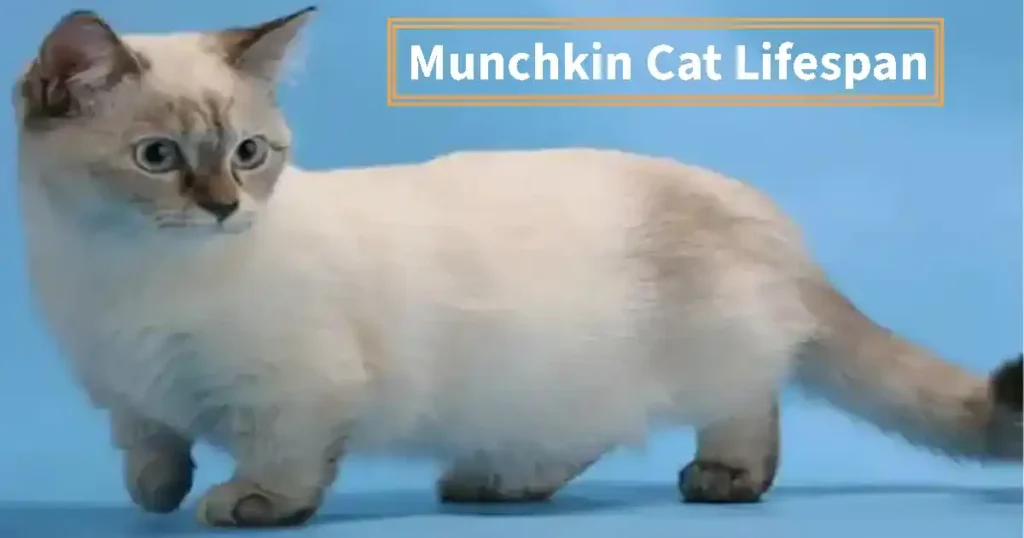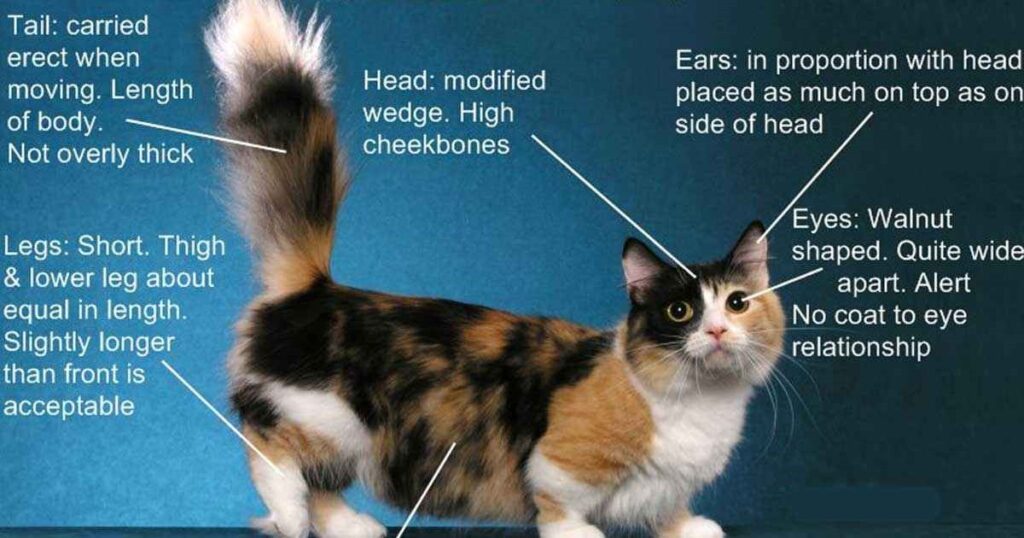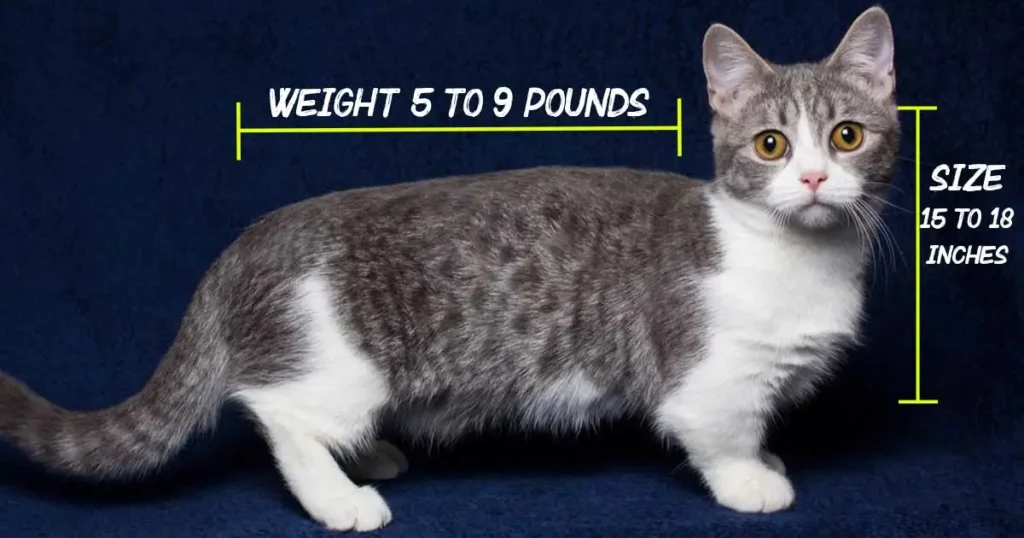Munchkin cats are unique for their short legs, caused by a genetic mutation. They originated in the U.S. in the 1980s. These small cats usually weigh between 5-9 pounds and live for 12-15 years. Munchkins are playful, affectionate, and social, making them great companions.
The breed’s name comes from the “Munchkin” characters in “The Wonderful Wizard of Oz.” Some worry about health issues related to their short legs, but many people adore their charm. Their popularity has risen, partly due to viral cat videos. Munchkin cats are loved for their playful and friendly nature, adjusting well to different homes.
History and Origins of Munchkin cats
This introduction sparked controversy, with critics expressing concerns about potential health issues associated with the genetic mutation. Today, the Munchkin cat is fully recognized by only a few registries, such as TICA, while other major registries, including the Fédération Internationals
- Munchkin Cat Size: Small stature, 5-7 pounds, short legs.
- Origin: Discovered in the 1980s, Louisiana, USA.
- Care: Regular grooming, balanced diet, routine vet visits.
- Health and Lifespan: 12-15 years, potential health issues include lordosis and pectus excavatum.
Minskin cat Breed History
In 2008, the Minskin was recognized by TICA as a Preliminary New Breed, and it is currently in TICA’s program for developing new breeds towards the title of Advanced New Breed. The Minskin is not yet recognized by other major cat registries like the Cat Fanciers’ Association.
| Characteristic | Munchkin Cats | Minskin Cats |
|---|---|---|
| Body Size | Small to medium, compact and muscular. | Small to medium, compact and muscular. |
| Coat | Long coat. | Hairless or nearly hairless, with sparse hair on legs, ears, and tail. |
| Weight | Male: 6-9 pounds, Female: 5-8 pounds. | Male: 6-9 pounds, Female: 5-8 pounds. |
| Size | 5-11 pounds, 7-10 inches long from nose to tail. | 5-11 pounds, 7-10 inches long from nose to tail. |
| Eye Color | All colors. | Green or blue. |
| Ear Shape | Pointed, medium, and wide-set. | Large, pointed, and wide-set. |
Size of Munchkin Cat
The size of a Munchkin cat can vary depending on its gender and age. Typically, male Munchkin cats weigh between 6 and 9 pounds, while females usually weigh between 4 and 8 pounds. These cats are small to medium-sized, standing about 7-8 inches tall.
| Size | Small |
| Energy Level | Moderate to High |
| Weight | 5 to 9 pounds |
| Length | Short legs, proportional body length |
| Life Span | 12 to 15 years |
| Shedding Level | Low to Moderate |
| Height | 6 to 9 inches at the shoulder (males slightly taller) |
Characteristics of Munchkin Cats
Munchkin cats are well-known for having medium-sized bodies and a moderate body type that go well with their thick, opulent fur coat. This breed is more visually appealing due to its vast selection of colors and patterns, which include bicolor, tabby, calico, tortoiseshell, and solid tones. what really sets Munchkin Persian cat a part are their small legs.
Caring for a Munchkin Cat
Caring for a Munchkin cat involves regular grooming, a balanced diet, and routine veterinary check-ups to monitor their health. Munchkin kitten care is similar to that of other breeds, with attention needed for their diet, socialization, and overall well-being.
| Category | Details |
|---|---|
| Diet and Nutrition | |
| Balanced Diet | Feed a well-balanced diet tailored to the cat’s age, size, and activity level. High-quality commercial cat food is typically sufficient. Consult a vet for advice. |
| Portion Control | Monitor their weight to prevent obesity, which can strain their joints due to their small stature. |
| Fresh Water | Always provide fresh water to keep them hydrated. |
| Exercise and Play | |
| Interactive Toys | Provide toys that stimulate their minds and bodies, such as feather wands and laser pointers. |
| Climbing and Jumping | Despite their short legs, they are agile. Provide cat trees and perches for physical activity. |
| Engagement | Ensure regular playtime to keep them active and prevent boredom. |
Diet and Nutrition
- Nutritious Food: Feed your Munchkin a balanced, nutritious diet specifically formulated for cats. Avoid human foods like chicken or tuna, as they lack essential vitamins like taurine.
- Kitten Food: For kittens, use kitten chow to promote healthy growth and development.
- Treats: Limit treats to 5-10% of their diet to avoid overfeeding.
Preparation needs
Preparing for a Munchkin cat involves creating a safe, comfortable space, getting the right supplies, kitten-proofing your home, and providing proper nutrition.
To care for a Munchkin cat, ensure they have a balanced diet suited to their age and health. Regular vet visits are important, and grooming should match their coat length. Keep them entertained with a stimulating indoor environment to support their playful nature.
Munchkin Cat Health Issues
Many people wonder, are Munchkin cats in pain? Generally, Munchkin cats are not in pain due to their short legs, but it’s essential to monitor their health and consult with a veterinarian if any signs of discomfort arise. While Munchkin cats are not typically considered to have significant health issues beyond those related to their unique physical traits, they can still experience common health problems, including respiratory infections and dental issues. Regular check-ups and a balanced diet can help mitigate these concerns.

Despite these potential health issues, many Munchkin cats can live happy, comfortable lives with proper management and proactive veterinary care.
Osteoarthritis
Osteoarthritis is a common health issue affecting Munchkin cats. This degenerative joint condition is characterized by the gradual breakdown of cartilage within the joints, leading to pain and stiffness. The condition is exacerbated by the abnormal limb shape and structure resulting from the genetic mutation that causes dwarfism in Munchkin cats.
Symptoms of osteoarthritis in munchkin cats
The symptoms of osteoarthritis in Munchkin cats include stiffness, reduced activity, lethargy, changes in personality (like avoiding being touched), decreased appetite, and poor grooming habits.
These symptoms indicate pain and discomfort caused by the degenerative joint condition, leading to inflammation and reduced mobility. Treatment focuses on managing pain and inflammation through medications and environmental modifications
Lordosis
Pros of Munchkin Cats
Munchkin cats are loved for their unique appearance, especially their short legs. This feature gives them a charming and distinctive look that sets them apart from other breeds.
Beyond their looks and personality, Munchkin cats might offer some health benefits. Their shorter legs could reduce the risk of certain health issues, like arthritis and joint problems, often seen in longer-legged cats.
Cons of Munchkin Cats
- Munchkin cats are susceptible to various health issues due to their distinctive leg structure.
- Potential spinal and joint issues may affect their mobility and quality of life.
- Prospective owners should be prepared for potential healthcare costs related to these conditions.
Personality of Munchkin Cats
Munchkin cats are known for their affectionate and playful nature, making them great family pets. Their engaging personality contributes to their popularity. They come in various colors, and knowing their physical traits and personality can help potential owners give them the best care possible.
Personality, Care, and Health
The Munchkin cat is known for its affectionate, playful, social, and intelligent personality. They form strong bonds with their human families and enjoy interactive playtime, making them great companions for both children and adults.
Caring for a Munchkin cat involves regular grooming, providing a balanced diet, routine veterinary check-ups, and ensuring they get moderate exercise.
Munchkins move in a novel way that is often compared to that of a weasel, which is wriggly and moving. Disregarding their short legs, Munchkins can bounce and climb, yet a couple of individuals could find it harder to do in that capacity.
- Playful, affectionate, social, curious.
- Ethical concerns regarding breeding practices and potential health problems.
- : Not significantly hypoallergenic, regular grooming helps manage shedding.
- Known as “dachshunds of the cat world,” agile and fast despite short legs.

Enrichment:
Munchkins are active, curious, and social, so they require plenty of interactive toys and attention from their owners Providing a low-entry cat tree or other vertical structures can accommodate their limited jumping ability.
Standard Veterinary Check-ups
Standard veterinary check-ups are fundamental for keeping up with the wellbeing and prosperity of your Munchkin cat, very much like some other feline variety.
- Plan a comprehensive physical examination with your veterinarian at least once a year.
- Assess overall health, check for illness or abnormalities, update vaccinations, discuss preventive care.
- Follow veterinarian’s recommendations for vaccinations.
- Core vaccinations are essential; additional vaccines based on lifestyle and risk factors.
- Maintain a regular parasite prevention program as recommended by your veterinarian.
- Include treatments for fleas, ticks, intestinal parasites, and heartworms based on risk factors and exposure.
- Ensure regular dental check-ups and professional cleanings.
- Prevent dental issues like tartar buildup, gingivitis, and tooth decay.
Adjusted Diet
Munchkin cats have similar dietary needs to other breeds. However, because of their short legs, it’s important to provide a diet that supports their overall health and maintains a healthy weight. This helps prevent stress on their joints.
Amazing facts about the Munchkin cat
| Feature | Description |
|---|---|
| Origin | Descended from a stray cat named Blackberry in 1983 |
| Ancestor | Short-legged kitten named Toulouse |
| Traits | Fast, agile, good sprinters but limited jumpers |
| Health | Generally healthy lifespan, but prone to lordosis and osteoarthritis |
| Recognition | Recognized by The International Cat Association (TICA) only |
| Nickname | “Corgis of the feline world” due to short legs and personality |
Despite their short legs, Munchkin cats are fast and agile, able to turn corners quickly and sprint, though they cannot jump as high as other breeds. Munchkin cats are descended from a pregnant stray cat named Blackberry, rescued in 1983, whose kittens were born with the short-legged trait.
History, Controversy, and Ethical Considerations
| Category | Information |
|---|---|
| History | First documented in the USA in the early 1980s, officially recognized as a breed by The International Cat Association (TICA) in 1994. |
| Controversy | Debates over ethical breeding practices due to potential health problems associated with their genetic mutation. |
| Ethics | Ethical concerns due to potential health issues; responsible breeding practices are crucial. |
| Popular Pets | Increasingly popular as pets due to their unique appearance and friendly nature. |
| Breeding Practices | Responsible breeding practices are essential to minimize health risks associated with the breed’s genetic mutation. |
| Recognition Status | Recognized by some cat associations like TICA, but not universally accepted due to ethical and health concerns. |
| Ethical Ownership | Prospective owners should consider the ethical implications and be prepared for potential health issues before acquiring a Munchkin cat. |
| Cultural Impact | Known for their cute and unique appearance, often featured in social media and pet shows. |
Hypoallergenic and Shedding
Potential owners often ask, “Are Munchkin cats hypoallergenic?” While no cat is entirely hypoallergenic, Munchkin cats do not produce significantly less allergenic dander compared to other breeds.
Most effective Facts method to Take care of a Munchkin cat
Caring for a Munchkin cat can be a truly rewarding experience, filled with love and joy. By focusing on their specific needs and providing proper care, you can help ensure they live a long and fulfilling life. Understanding the Munchkin cat lifespan and their health issues, such as whether they are prone to certain health problems, is essential for their well-being.
Munchkin cats are known for their unique physical traits, including their short legs. This distinctive feature often raises questions about their health, such as whether they experience pain or have special health concerns. Despite their unusual appearance, Munchkin cats are generally healthy and adapt well to their environment, making them charming and affectionate companions.
Scratching Options
Give numerous scratching posts and cushions all through your home to give your Munchkin a suitable source for their scratching conduct. Urge them to utilize these assigned scratching surfaces by setting them in regions where your feline likes to scratch.
Litter Box Training
Begin litter box preparing early and guarantee that your Munchkin has simple admittance to a spotless and very much kept up with litter box consistently. Utilize a litter that your feline likes and scoop the case everyday to keep it new.
4 Things You Didn’t Know About Munchkin Cats
The munchkin cat has continued to exceed expectations ever since its official release in 1991: feline fancier specialists anticipated that it would be a fleeting variety, that it wouldn’t have a run of the mill future, and that it was enduring extraordinarily because of its strangely short legs.
Accidental Discovery
Discovering something new by accident can often lead to wonderful surprises! Finding a comfortable seat was clearly an accident. It can be more beneficial to take a moment to relax and sleep.
Have a Seat
It is a delightful surprise to find a Munchkin cat in a cozy spot. Their playful charm and distinctive appearance invite you to join them for a moment of relaxation and companionship. Partake in the fortunate experience and the opportunity to bond with these cute cats.
Not All Munchkins are Alike
Every Munchkin cat is unique; their characters, coat examples, and dispositions fluctuate broadly, adding to their singular appeal and allure. Munchkin cats show assorted characters, from energetic and active to delicate and saved.
- Their jacket designs arrive in various varieties and mixes, going from dark-striped cat and strong to tortoiseshell and calico.
- One more understanding may be a wariness against making expansive speculations or suspicions about a gathering of people.
5 Common Health Concerns for Munchkin Cats
The most widely recognized ailments for the munchkin cate variety, in view of Cross country pet protection policyholder claims in 2016 are, arranged by inescapability:
Uremia (end-stage kidney disappointment)
cat lower urinary bundle ailment (FLUDT)
Diabetes mellitus: Lymphosarcoma, which impedes lymphoid tissue advancement, Munchkin felines may be more likely to develop diabetes mellitus, a condition characterized by high glucose levels and caused by insulin resistance or lack of production. Incidental effects could consolidate extended thirst, moderate pee, weight decrease, and progressiveness
Fun Facts Activities for Munchkin Cats
Keeping Munchkin cats entertained and mentally stimulated is important for their well-being. Here are some fun activities and toys that Munchkin cats may enjoy:
Fun Facts and Unique Traits
Fun facts about Munchkin cats include their nickname as the “dachshunds of the cat world” due to their short legs. Despite their stature, they are known for their speed and agility.

Activity and Playfulness
Despite their short legs, Munchkin cats can jump and climb with ease, though their jumping ability may be somewhat limited compared to other breeds. Videos of Munchkin cats running and playing often showcase their energetic and spirited nature, highlighting their joy and activity levels.
Interactive Playtime
Set aside dedicated playtime each day to interact with your Munchkin cat. Use toys like wand toys or interactive fishing pole toys to engage them in active play. This helps satisfy their natural hunting instincts and provides them with much-needed exercise.
- Toy Chase
- Hide and Seek
- Feather Wand Play
- Puzzle Feeders
- Laser Pointer Games
Conclusion
Despite the controversy surrounding their breeding history, Munchkin cats excite with their distinctive appearance and affectionate nature. This guide fills in as a significant asset for imminent proprietors, offering bits of knowledge into their consideration and qualities.
With appropriate thoughtfulness regarding preparing, wellbeing, and socialization, Munchkin felines can flourish as cherished sidekicks, enhancing the existences of their proprietors with their lively shenanigans and adoring disposition.
FAQs
What is a Munchkin cat?
A Munchkin cat is a variety known for its unmistakable short legs, coming about because of a hereditary change. Notwithstanding their short height, they are solid, spry, and fun loving cats.
Are Munchkin cats healthy?
Generally, Munchkin cats are healthy and can live fulfilling lives. Regular veterinary check-ups and proper care can help maintain their health.
Do Munchkin cats have mobility issues?
While Munchkin cats have shorter legs than average cats, they typically do not have significant mobility issues. They are remarkably agile and can move around with ease.
Do Munchkin cats need special care?
Munchkin cats do not require significantly different care than other cat breeds. However, due to their shorter legs, it’s essential to ensure they have access to low surfaces and ramps to help them reach higher places.
Are Munchkin cats good pets for families?
Munchkin cats are known for their playful and affectionate nature, making them excellent pets for families. They typically get along well with children and other pets, enjoying interactive play and companionship.
Can Munchkin cats be shown in cat shows?
Yes, Munchkin cats can participate in cat shows and competitions like other breeds. However, opinions on the breed may vary among different cat registries and organizations.
Are Munchkin cats hypoallergenic?
No, Munchkin cats are not hypoallergenic. Like all cats, they produce allergens in their saliva, urine, and dander, which can trigger allergic reactions in sensitive individuals.
What is the average lifespan of a Munchkin cat?
The average lifespan of a Munchkin cat is similar to that of other domestic cat breeds, typically ranging from 12 to 15 years or more with proper care.




